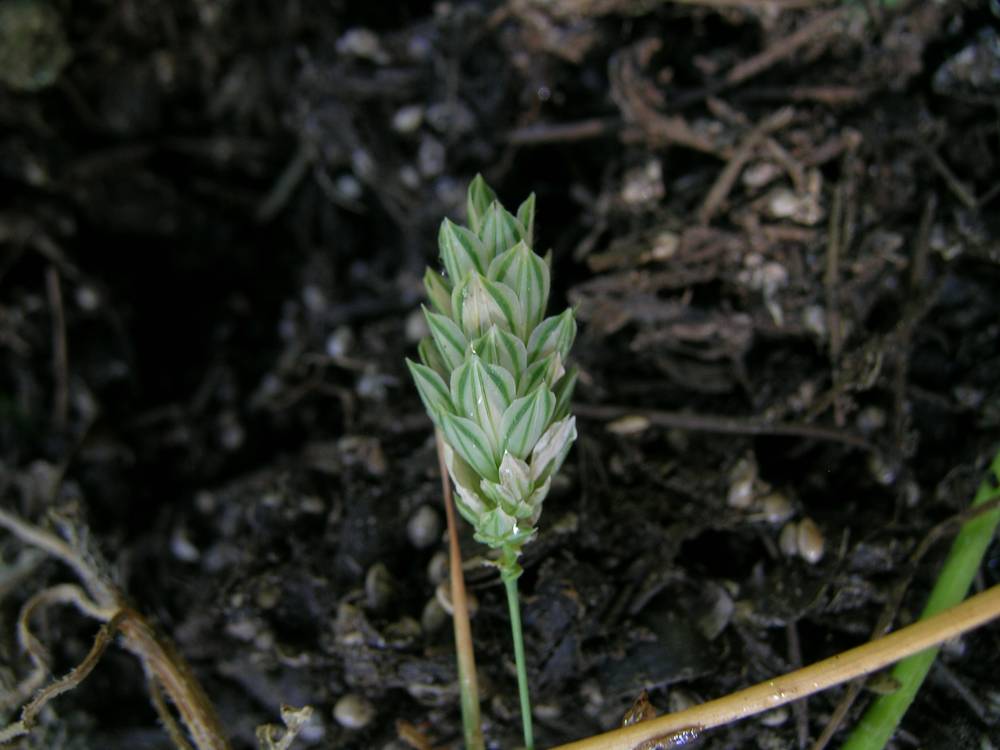
Plants annual, 30–100 cm tall.
Leaves blades 3–25 cm × 2–10 mm.
Inflorescences ovoid to oblong-ovoid, not lobed, truncate at the base, 1.5–5 × 1.5–2 cm, spikelets borne singly; branches not evident; disarticulation above the glumes.
Spikelets all alike, 3 florets; lower 2 florets sterile.
Glumes 7–10 × 2–2.5 mm, smooth, glabrous, sometimes sparsely pilose between the veins; keels winged, wings to 0.6 mm wide, widening toward the tip; lateral veins inconspicuous, smooth; tips rounded, short-pointed.
Sterile florets lanceolate, 2–4.5 mm, 33% or more the length of the bisexual floret, acute, sparsely pubescent.
Terminal florets 4.5– 6.8 mm; lemmas ovate, straw-colored to gray-brown, densely pubescent, shiny.
Anthers 2–4 mm.
2n=12.
Disturbed areas, often around bird feeders. 0–900 m. Col, CR, Est, Lava, Owy, WV. CA, ID, WA; north to Yukon, scattered east throughout the US and southern Canada; nearly worldwide. Exotic.
Phalaris canariensis has larger spikelets than Oregon’s other Phalaris species, with distinctive glumes so widely winged that they are almost semicircular near the tips.
as described under Phalaris canariensis
Plants annual. Culms 30-100 cm. Ligules 3-6 mm, rounded to obtuse, lacerate; blades 3-25 cm long, 2-10 mm wide. Panicles 1.5-5 cm long, 1.5-2 cm wide, ovoid to oblong-ovoid, continuous, not lobed, truncate at the base; branches not evident, the spikelets borne singly, not clustered. Spikelets homogamous, all spikelets with a bisexual floret; florets 3; disarticulation above the glumes, beneath the sterile florets. Glumes 7-10 mm long, 2-2.5 mm wide, smooth, mostly glabrous, sometimes sparsely pilose between the veins, keels winged, wings to 0.6 mm, widening distally, lateral veins inconspicuous, smooth, apices rounded, mucronate; sterile florets 2, equal or subequal, 2-4.5 mm, 1/3 or more the length of the bisexual florets, lanceolate, sparsely pubescent, acute; bisexual florets 4.5-6.8 mm, ovate, densely pubescent, shiny, stramineous to gray-brown; anthers 2-4 mm. 2n = 12.
Phalaris canariensis is native to southern Europe and the Canary Islands, but is now widespread in the rest of the world, frequently being grown for birdseed. The exposed ends of the glumes are almost semicircular in outline, making this one of our easier species of Phalaris to identify.